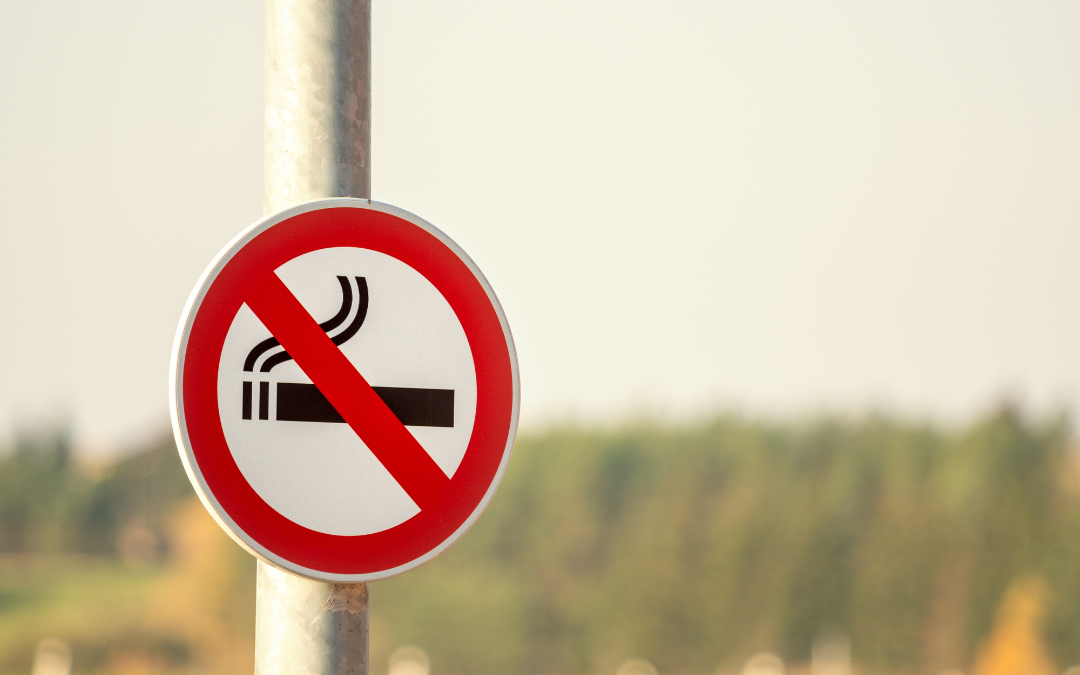November 17th is the Great American Smokeout. Every year on the 3rd Thursday of November, this day is an opportunity to work towards a healthier, tobacco-free community. Whether that means taking the first step towards quitting tobacco yourself or helping someone you know quit, there are lots of ways to get involved.
While tobacco use rates have gone down in the past few decades, 34 million people in the United States still smoke. Tobacco use remains the number one cause of preventable death in the world, and according to the Oregon Health Authority, in 2019 we spent $9.8 Million on tobacco-related medical care in Tillamook County alone. Tobacco use of all kinds, including cigarettes, cigars, and smokeless tobacco like chew or dip, can increase the risk of cancer, heart disease, lung disease, and type 2 diabetes. E-cigarettes, which are growing in popularity among youth, can negatively impact focus, memory, and brain development, as well as damage lung tissue. Quitting these products is the best thing you can do to improve your health.
Quitting looks different for everyone. You should plan your quit in a way that makes sense for you. Some people quit “cold turkey” on their own, but there are lots of free resources available to help you on your quitting journey. A few good places to start are:
- Talk to your healthcare provider: Your provider can help guide you through the quitting process, including making a quit plan, connecting you with additional resources and tools, and prescribing medication that can help reduce nicotine cravings. Tobacco cessation treatments are covered by most insurance plans.
- Build a support system: This can mean talking to friends and family about your plan to quit and what they can do to help support you, or connecting with a counselor. You can also use free phone, text, and online resources to get support.
- Oregon Tobacco Quit Line: 1-800-QUIT-NOW (1-800-784-8669) (English) or 1-855-DÉJELO-YA (1-855-335-3569) (Español): Free phone counseling, mailed and online resources, and nicotine patches or gum for those eligible. Available to anyone in Oregon age 13+.
- SmokefreeTXT: A free texting service with supportive messages to help you stay quit. Text QUIT to 47848 to get started.
- QuitSTART and QuitGuide: Free smartphone apps to help you manage cravings and stay motivated. Download them from your phone or tablet’s app store.
- This is Quitting: A free texting service specifically for teens and young adults who want to quit vaping. Text DITCHVAPE to 88709.
- Know why you’re quitting: Having a list of reasons why you want to quit (like health, money, or family) can help you stay motivated when you experience cravings.
- Make a plan to manage cravings: Activities like going for a walk, drinking water, or breathing exercises can help you get through difficult cravings. Planning these activities ahead of time and knowing your triggers makes it easier to respond in the moment, and the worst symptoms will usually go away within a few weeks.
- Keep trying: It takes most people several attempts to quit for good. Even if you slip, remember that you’re still one step closer to a tobacco-free life.
Using a combination of methods, such as medication and counseling, provides the best chance for long-term success. Use November 17th as a day to start building your quit plan, or if you’re ready to quit now, make it your first day of being tobacco-free.
If you want to support someone else in quitting, the best thing you can do is listen to their needs. Lecturing and nagging won’t help, but being patient and positive, even if they get frustrated or slip, can go a long way in helping someone stay tobacco-free. You can also make your home, car, and other spaces tobacco-free, remove any items or odors that may remind the person of tobacco (such as ashtrays or lighters), and avoid using tobacco yourself, especially while you are around the person trying to quit. For more tips on how to help someone else quit, visit https://www.cancer.org/healthy/stay-away-from-tobacco/helping-a-smoker-quit.html
To learn more about the available tools and resources, visit tillamookchc.org/ph/tobacco-prevention. Remember: You don’t have to quit tobacco in one day. Start with day one.
AUTHOR: Amy McVeety, Tobacco Prevention and Education Program Coordinator at Tillamook County Community Health Center
Other wellness questions? Email us at info@tillamookcountywellness.org. For more local health and wellness information, visit www.tillamookcountywellness.org or follow Tillamook County Wellness on Facebook and Instagram.

